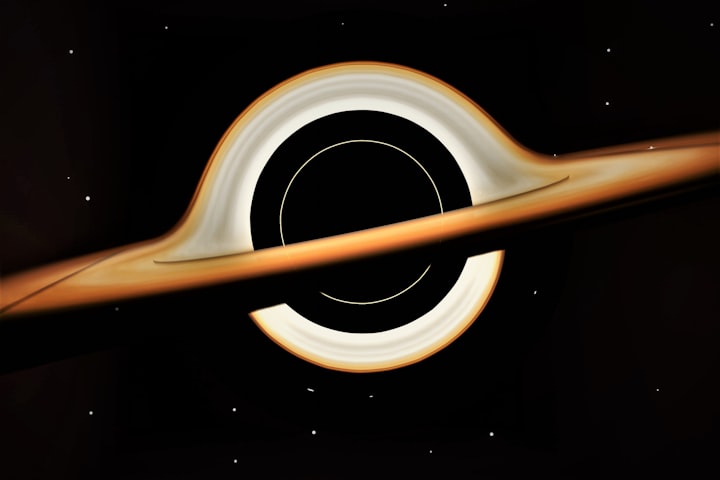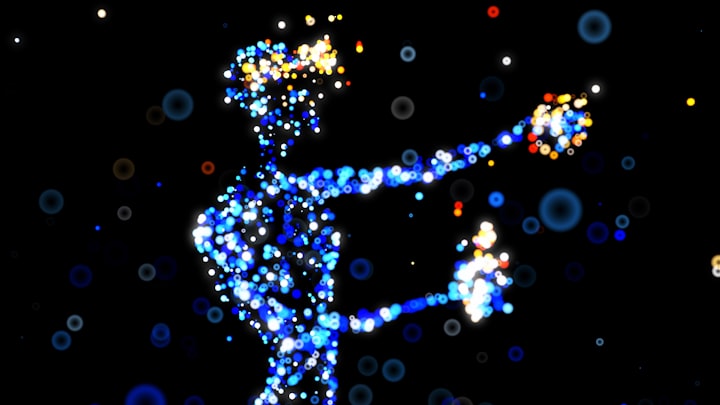Unveiling the Mysteries of Black Holes
From Theoretical Whispers to Cosmic Shadows
Imagine a place in the universe so dense and powerful that even light succumbs to its clutches. We're delving into the enigmatic realm of black holes, captivating entities that stand as some of the most compelling subjects of cosmic exploration.
Why, you might ask? Because they defy the boundaries of our understanding of the universe. Black holes are not merely colossal masses of darkness; they represent the ultimate manifestation of gravity, akin to cosmic vacuum cleaners devouring anything that ventures too close.
Concealed within their dark silhouettes lie secrets about the universe, waiting to be unraveled—a cosmic puzzle that has ensnared the curiosity of scientists and space enthusiasts alike.
The journey of comprehending these extraordinary celestial bodies dates back to the 18th century, courtesy of the minds of John Michell and Pierre Simon Laplace.
In an era when the universe was largely an enigmatic entity and astronomy was just beginning to take root, English clergyman John Michell proposed the concept of dark stars—celestial bodies so massive and dense that their gravity would imprison even light.
Simultaneously, across the English Channel, French scholar Pierre Simon Laplace independently reached similar conclusions, suggesting the existence of invisible dark bodies, concealed by their gravitational might. Using Newton's laws of gravity, groundbreaking at the time, these two visionary men hypothesized the existence of these extraordinary celestial bodies.
However, their theories were speculative and lacked the scientific framework to be fully comprehensible. The concept of a dark star was revolutionary but ahead of its time, waiting for a new understanding of the universe to bring it to life.
These early musings on dark stars and celestial mysteries planted the seeds for the black hole theory. While not fully formed, they represented crucial steps in the scientific journey toward understanding these captivating celestial phenomena.
Michell and Laplace dared to imagine a universe more complex and strange than previously thought. Yet, it required another significant scientific breakthrough to transform these theories into the modern concept of a black hole.
Enter Albert Einstein and his revolutionary theory of general relativity. In the early 20th century, Albert Einstein, a patent clerk in Switzerland, proposed a gravity theory distinct from Newtonian physics. He envisioned gravity as a warping of space and time around massive objects, illustrated by a rubber sheet analogy. This groundbreaking theory paved the way for black holes.
Black holes, not initially part of Einstein's theory, emerged as a logical extension.
According to general relativity, if an object is sufficiently dense, it can warp spacetime to such an extent that nothing, not even light, can escape its gravitational pull.
This radical idea, even doubted by Einstein himself, marked the birth of the concept of a black hole—a point in space where gravity is so potent it consumes everything. Though Einstein was skeptical, the stage was set for the first observational evidence of black holes, as we'll soon explore.
In 1971, the potential black hole Cygnus X-1 was observed in the vast universe, nestled within the constellation Cygnus, also known as the swan.
This extraordinary object emitted X-rays at an immense rate, fluctuating in milliseconds.
The proposal emerged that this could result from a star orbiting an invisible, gravitational giant—a black hole.
The key lay in the companion star of Cygnus X-1, observed to be pulled by an immense gravitational force, moving in a small circle.
It was as though the star were tethered to an invisible behemoth, indicating an object approximately 15 times the mass of our sun, yet so compact that it had to be less than 60 miles in diameter—the description fitting a black hole.
This discovery heralded a new era in astronomy and cosmology, validating Einstein's general theory of relativity and propelling us into the era of black hole astronomy.
Since then, our understanding of black holes has burgeoned. Fast-forward to the present day, where black holes are no longer theoretical enigmas but undeniable realities.
Recent discoveries, such as the first image of a black hole captured by the Event Horizon Telescope, have brought us closer than ever to understanding these intriguing phenomena.
This global network of radio telescopes achieved the seemingly impossible, capturing an image of the impenetrable-a black hole located in the heart of the Messier 87 galaxy, 55 million light-years away.
This groundbreaking image not only confirmed the existence of black holes but also underscored the validity of Einstein's general relativity.
As our knowledge and observations of black holes grow, they transcend theoretical musings to become integral components of our cosmic understanding.
Advancements in technology, exemplified by the Laser Interferometer Gravitational-Wave Observatory (LIGO), have enabled the detection of ripples in the fabric of spacetime—gravitational waves.
These waves, emanating from black holes merging over a billion years ago, confirm not just their existence but also open new windows to observe the universe.
Black holes are not mere celestial oddities; they play crucial roles in the evolution of galaxies, including our Milky Way. Looking ahead, the future of black hole research is promising, with scientists worldwide eager to unravel more about these cosmic enigmas.
Once a mere speculation rooted in the mathematical gymnastics of Albert Einstein's theory of general relativity, they are now recognized as tangible entities shaping the cosmos.
Our journey to understand black holes has been a testament to human curiosity and perseverance.
As we stand on the precipice of cosmic discovery, black holes continue to captivate us, challenging our perceptions of reality by bending both space and time.






Comments
There are no comments for this story
Be the first to respond and start the conversation.